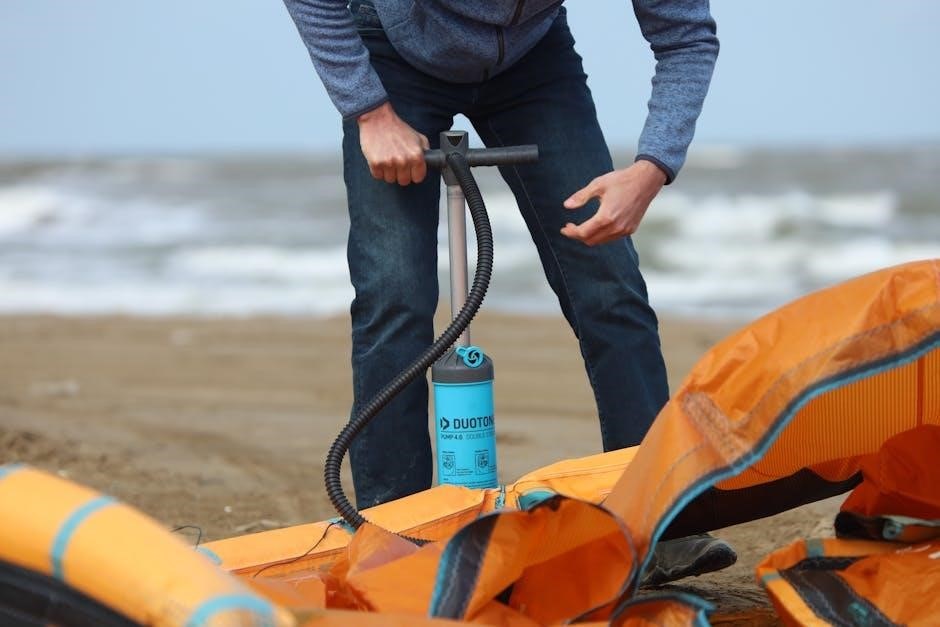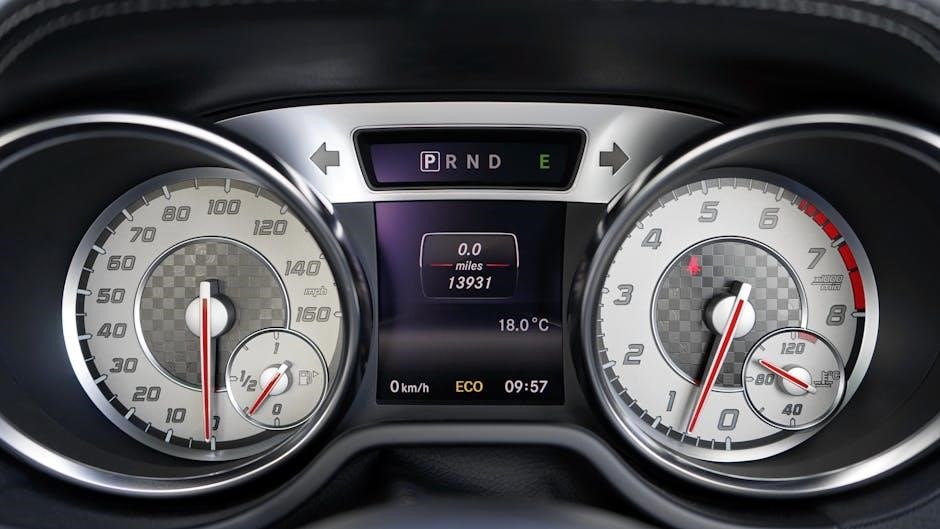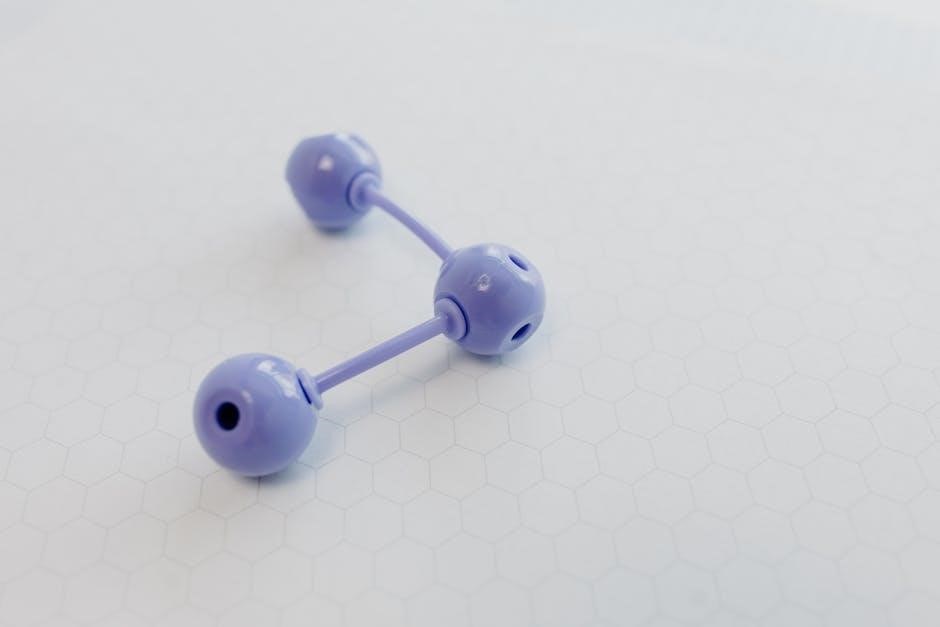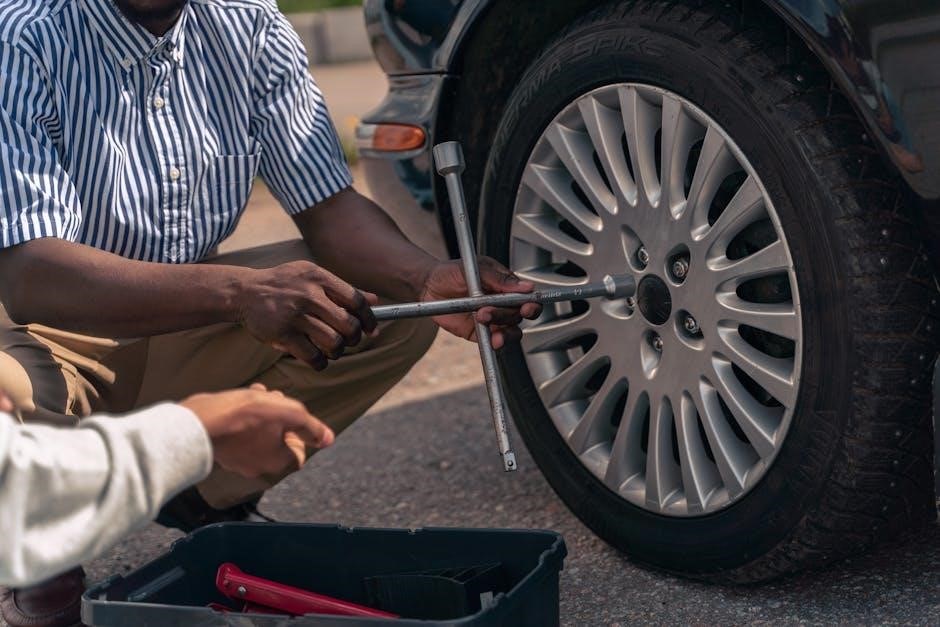A manual siphon pump is a cost-effective, reliable tool for transferring liquids like fuel, water, or oil. Its simple design ensures efficiency and ease of use, making it suitable for various applications while providing durable construction for long-lasting performance.
1.1 Overview of Pump Siphon Manual
A manual siphon pump is a hand-operated device designed for transferring liquids like gasoline, water, or oil. Constructed from durable materials such as polypropylene or stainless steel, it ensures safe and efficient fluid transfer. Its portability and simplicity make it ideal for various applications, including vehicles, boats, and aquariums. The pump operates by creating suction, allowing liquids to flow through flexible or rigid tubes into a receiving container, ensuring quick and mess-free transfers.
1.2 Importance of Using a Manual Siphon Pump
Manual siphon pumps are essential for safe and efficient liquid transfer, especially for hazardous substances like fuel or chemicals. They eliminate the risk of electrical hazards, offering a reliable, low-cost solution. Their portability and ease of use make them ideal for emergencies or remote locations. Additionally, they promote environmental safety by preventing spills and leaks, ensuring responsible handling of liquids in various applications, from vehicles to aquariums.

Types of Manual Siphon Pumps
Manual siphon pumps are primarily available in two types: piston and squeeze bulb designs. Both offer reliable fluid transfer solutions, catering to different needs and preferences effectively.
2.1 Piston-Type Manual Siphon Pumps
Piston-type manual siphon pumps are durable and efficient, often constructed from stainless steel for longevity. They are ideal for transferring thicker liquids like diesel or oil, with a flow rate of up to 4 liters per minute. These pumps operate by creating suction to draw liquid upward, making them suitable for heavy-duty applications. Their robust design ensures reliability and minimal maintenance, making them a popular choice for industrial and automotive use.
2.2 Squeeze Bulb-Type Manual Siphon Pumps
Squeeze bulb-type manual siphon pumps are lightweight and portable, designed for quick liquid transfers. Made from durable polyethylene, they are ideal for water, gasoline, and other low-viscosity fluids. The squeezable bulb creates suction, making them easy to operate without electricity. These pumps are perfect for small-scale applications like draining aquariums or fuel tanks, offering a cost-effective and user-friendly solution for everyday use.

How to Use a Manual Siphon Pump
Insert the intake tube into the liquid source and the discharge tube into the receiving container. Squeeze the bulb to create suction, then monitor the flow for smooth transfer.
3.1 Step-by-Step Operating Instructions
To operate a manual siphon pump, start by inserting the rigid intake tube into the liquid source. Ensure the discharge tube is placed in the receiving container. Squeeze the bulb repeatedly to create suction, allowing the liquid to flow. Once the flow begins, monitor the transfer to avoid spills. For piston-type pumps, move the handle up and down to maintain pressure. This method ensures efficient and safe liquid transfer, suitable for fuels, water, or oils, with flow rates up to 4 liters per minute.
3.2 Safety Precautions and Best Practices
Always operate the pump in a well-ventilated area to avoid inhaling fumes. Wear protective gloves and eyewear when handling hazardous liquids. Ensure the pump is securely positioned to prevent spills. Never use a damaged or worn-out pump, as it may lead to leaks. Keep the pump away from open flames or sparks when transferring flammable liquids. Regularly inspect the tubes and valves for damage. Follow the manufacturer’s guidelines for maximum flow rates and compatible liquids to ensure safe and efficient operation.

Applications of Manual Siphon Pumps
Manual siphon pumps are ideal for transferring fuel, water, oil, and chemicals in homes, garages, and outdoor settings, ensuring safe and efficient liquid management for various tasks.
4.1 Fuel Transfer (Gasoline, Diesel, etc.)
Manual siphon pumps are essential for safely transferring gasoline, diesel, and other fuels between containers or vehicles. They are ideal for draining fuel tanks, refueling equipment, or emergency transfers. Designed with durable materials, these pumps prevent fuel spills and leaks, ensuring efficient and hazard-free operations. Their portability and ease of use make them a practical solution for garages, outdoor activities, or large vehicles, providing reliable fuel management without the need for electricity.

4.2 Water Transfer and Drainage
Manual siphon pumps are versatile tools for water transfer and drainage, ideal for aquariums, pools, and small tanks. They efficiently drain water from flooded areas, boats, or machinery, ensuring quick cleanup without electricity. Portable and easy to use, these pumps are perfect for outdoor activities, camping, or emergency situations, providing a reliable solution for water management in various domestic and recreational settings.
4.3 Oil and Chemical Transfer
Manual siphon pumps are ideal for safely transferring oil, diesel, petrol, and other chemicals. Constructed from durable materials like polyethylene and stainless steel, they resist corrosion and ensure secure handling of hazardous liquids. Suitable for industrial and domestic use, these pumps are lightweight and portable, making them perfect for draining oil from vehicles or transferring chemicals in controlled environments with minimal effort and maximum efficiency.
Troubleshooting Common Issues
Identify and fix air leaks, clogged tubes, or valve blockages to restore proper function. Regular inspection and maintenance ensure optimal performance and longevity of the siphon pump.
5.1 Fixing Air Leaks in the System
To fix air leaks, inspect all connections and ensure they are tight. Check the suction and discharge tubes for cracks or damage. Replace worn-out gaskets or seals. Lubricate moving parts if necessary. Air leaks can disrupt the siphoning process, so addressing them promptly maintains efficiency. Regularly check valves and hoses to prevent further issues. Proper maintenance ensures consistent performance and avoids liquid transfer interruptions.
5.2 Dealing with Clogged Tubes or Valves
Clogged tubes or valves can hinder liquid flow. Inspect and clean debris using a stiff wire or brush. Soak parts in a cleaning solution if necessary. Regularly flushing the system with water or a compatible solvent helps prevent blockages. For persistent clogs, disassemble and examine internal components. Replace any damaged or obstructed parts to restore proper function. Maintenance ensures smooth operation and prevents future issues.
Maintenance and Care
Regular maintenance ensures longevity. Clean tubes and valves after use, store in a dry place, and inspect for wear. Durable materials ensure performance and lifespan.
6.1 Cleaning and Storage Tips
After each use, rinse the pump’s tubes and valves with clean water to remove residue. For stubborn stains, use mild detergent and avoid abrasive cleaners. Store the pump in a dry, cool place, away from direct sunlight. Regularly inspect for wear and tear, and replace any damaged parts promptly. Proper care ensures optimal performance and extends the pump’s lifespan.
6.2 Replacing Worn-Out Parts
Regularly inspect the pump for worn-out components like check valves, seals, or squeeze bulbs. Replace these parts immediately to maintain efficiency. Use original or compatible replacement parts to ensure proper fit and performance. Refer to the manual for detailed instructions or diagrams. Replacing worn parts prevents leaks and extends the pump’s lifespan, ensuring reliable operation for future use.
Materials and Durability
Manual siphon pumps are often constructed from durable materials like stainless steel and polyethylene, ensuring chemical resistance and longevity. These materials enhance the pump’s performance and lifespan.

7.1 Stainless Steel and Polyethylene Construction
Manual siphon pumps are typically made from high-quality materials like stainless steel and polyethylene, ensuring durability and resistance to corrosion. Stainless steel components provide strength and longevity, while polyethylene offers lightweight and chemical-resistant properties. These materials are ideal for handling harsh environments and various liquids, making the pump versatile for both indoor and outdoor use. Their robust construction ensures reliable performance over time, even with frequent use.
7.2 Chemical Resistance and Longevity
Manual siphon pumps often feature chemical-resistant materials, ensuring safe handling of hazardous liquids. Their durable construction, including stainless steel and polyethylene, provides longevity and resistance to corrosion. These pumps are designed to withstand harsh environments and frequent use, maintaining optimal performance over time. The combination of robust materials and precise engineering ensures reliability and extends the product’s lifespan, making them a dependable choice for various industrial and domestic applications.
Manual vs. Electric Siphon Pumps
Manual siphon pumps are portable, cost-effective, and ideal for small-scale tasks, while electric pumps offer faster operation for larger volumes, requiring power and higher initial investment.
8.1 Advantages of Manual Pumps
Manual siphon pumps are cost-effective, portable, and easy to use without electricity. They are ideal for small-scale liquid transfers, such as fuel, water, or oil. Their simplicity ensures reliability and minimal maintenance. These pumps are environmentally friendly, producing no emissions, and are perfect for emergency situations or remote locations where power is unavailable. They also offer a sustainable solution for occasional use, making them a practical choice for various applications.
8.2 Limitations Compared to Electric Pumps
Manual siphon pumps require physical effort, making them less efficient for large-scale transfers. They operate at slower flow rates compared to electric pumps, which can handle higher volumes quickly. Manual pumps are also less suitable for thick or viscous liquids, as they lack the power to move such fluids effectively. Additionally, they are less convenient for continuous or heavy-duty use, where electric pumps offer greater speed and efficiency.

Environmental Considerations
Manual siphon pumps promote safe handling of hazardous liquids, minimizing spills and environmental contamination. Their non-electric operation reduces reliance on batteries, offering an eco-friendly solution for fluid transfer needs.
9.1 Safe Handling of Hazardous Liquids
Manual siphon pumps are essential for safely transferring hazardous liquids like gasoline, diesel, and chemicals. They prevent spills and leaks, reducing environmental risks. Proper use ensures minimal exposure to harmful substances, protecting both the user and the environment. Always follow safety guidelines and use compatible materials to maintain integrity during fluid transfer operations.
9.2 Preventing Spills and Leaks
Manual siphon pumps are designed to minimize spills and leaks during fluid transfer. Proper use ensures tight seals and secure connections, while durable materials resist wear and tear. Regular inspection of tubes and valves, along with correct assembly, further prevents accidents. Following manufacturer guidelines and maintaining equipment helps ensure safe, leak-free operations, protecting both the user and the environment from potential hazards.
A manual siphon pump offers a practical, efficient, and cost-effective solution for fluid transfer. Its portability and versatility make it ideal for various tasks, ensuring reliable performance and ease of use for both professionals and DIY enthusiasts alike.
10.1 Final Thoughts on Manual Siphon Pumps
Manual siphon pumps are efficient, reliable tools for transferring liquids like fuel, water, and chemicals. Their simplicity, versatility, and cost-effectiveness make them ideal for various tasks, from household chores to industrial applications. With proper maintenance and safe handling, these pumps provide long-lasting performance. They are environmentally friendly and suitable for both professionals and DIY enthusiasts, offering a practical solution for fluid transfer needs without the reliance on electricity.





































































